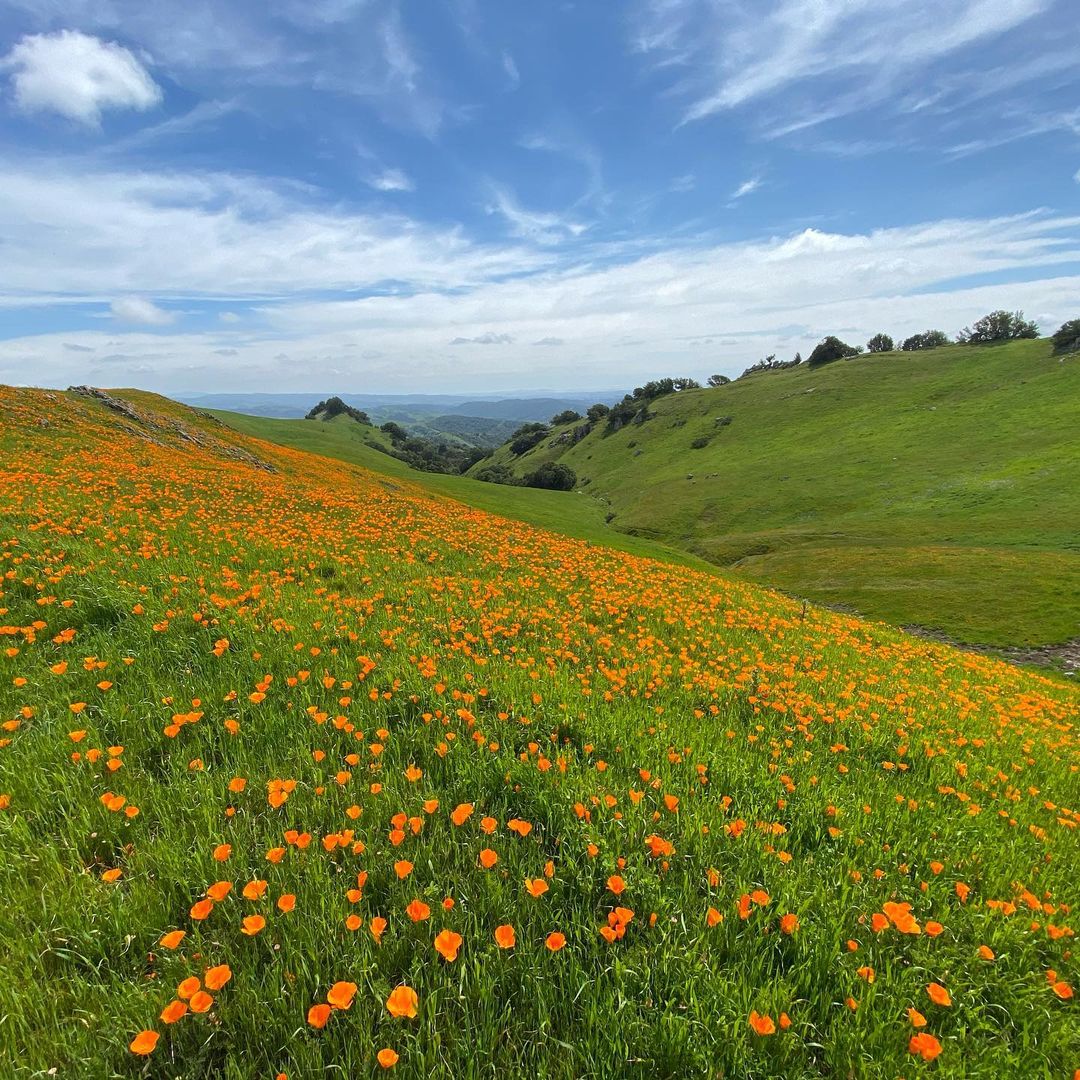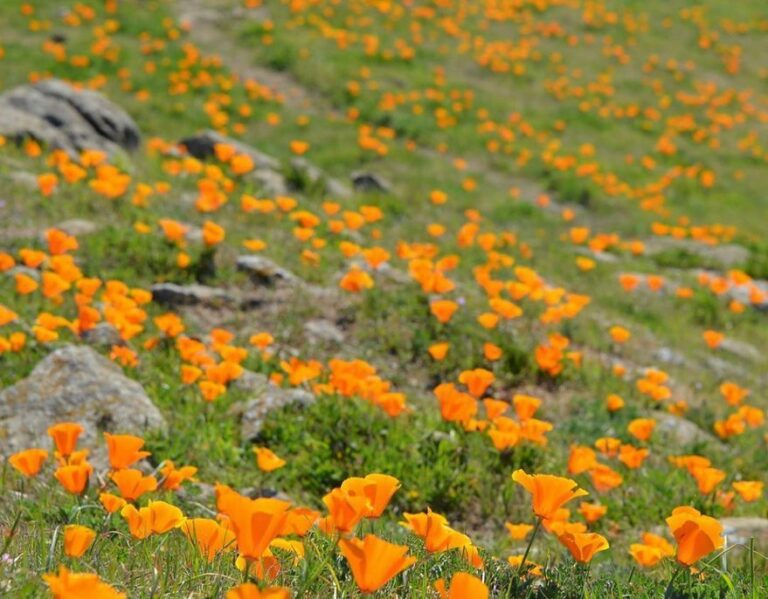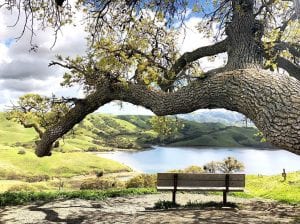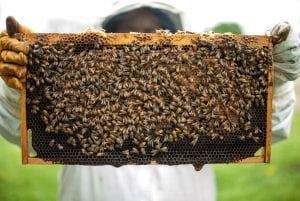Find out how to get the most of your springtime trip to the Tri-Valley with some of the best seasonal activities to do in our region.


Wildflower Map
Use this map and the guides below to find the best spots in the Tri-Valley for wildflower viewing.
Las Trampas Regional Park
Las Trampas Regional Park features 5,778 acres of open space and offers visitors sweeping 360 degree views of the surrounding valleys and ravines. In addition to being home to the O’Neill National Historic Site, an abundance of plant and wildlife also takes up residence in this remote, yet accessible, preserve. In fact, Las Trampas Regional Park has so much open space that it is one of the most popular places in the Tri-Valley to take your dog on off-leash hikes (check out our Dog-Friendly Guide for more locations).
Each spring the park’s sloping hillsides and steep canyons are carpeted with a variety of wildflowers including California Poppies. For the best wildflower viewing, visit between mid-February and mid-May and keep your eyes peeled on the following trails: Rocky Ridge View Trail, Las Trampas Ridge Trail, and Sycamore Trail.
Mount Diablo State Park
Mount Diablo State Park sits a mere 3,849 feet above sea level, but its peaks offer fantastic views of the surrounding low-lying foothills. In addition to featuring panoramic views of the entire Bay Area, several rare and native ferns, grasses and wildflowers thrive in the 20,000-plus acre park. In fact, some plant species are found solely within the park limits and no where else in the world.
Wildflowers grow year-round in the park but those who are looking for especially colorful blooms should visit between mid-January and mid-May. Wildflowers are easily spotted alongside the winding roads that lead to the mountain’s summit, but if you’re up for a hike visit the following trails: North Peak Trail, Mary Bowerman Trail, and Mitchell Canyon.
Make sure to check out our Visiting Mount Diablo State Park blog before making the trek.
Del Valle Regional Park
Del Valle Regional Park is located just 10 miles south of Livermore and encompasses 4,395 acres of land that surrounds a 5-mile long lake. A popular spot for hiking, mountain biking, horseback riding, boating, picnicking, and camping, the park’s rolling hills turn a gorgeous green and feature several pops of color each spring. Visitors seeking out wildflowers should visit the park between mid-February and mid-May.
Enter through the park via Arroyo Road Staging Area for a steep yet rewarding hike to the East Short Trail and Heron Bay Trail. For a less challenging hike, enter the park via the East Ridge Trail by parking roughly a mile before approaching the park gates on Del Valle Road.
Don’t miss out on everything Del Valle Regional Park has to offer! Read our What to Do at Lake Del Valle blog before visiting.
Sunol Regional Wilderness
For the best chance to view wildflowers, make your way to Little Yosemite via Canyon View Trail or try Maguire Peaks Trail and Indian Joe Creek Trail. Check with a naturalist at the Visitor Center to inquire on current wildflower whereabouts and to check out a wildflower identification guide.
Morgan Territory Preserve
We can’t mention wildflowers in the Tri-Valley without mentioning Morgan Territory Regional Preserve. Each spring this 5,321 acre park sees more than 90 species of wildflowers, including the Diablo sunflower, which only grows in the foothills of Mount Diablo. The park is also steeped in Native American history and was the traditional homeland of the Volvon, one of the Native American groups who resisted Spanish missionization.
The best time to visit Morgan Territory Regional Preserve to view its wildflower display is between March and May. Wildflowers can typically be found alongside Coyote Trail, Stone Corral Trail and Volvon Loop Trail.
Dublin Hills
Dublin Hills Regional Open Space Preserve is located nearby Interstate 580, making it extremely accessible to visitors. Although the preserve spans just 654 acres, it encompasses grassland areas that have been largely left untouched since the 1800’s.
Sprinkled throughout the park are several streams and springs which prove to be an important source of water for wildlife and various plant communities. Visit the preserve in the spring between February and May and head to the Calaveras Ridge Trail in search of seasonal wildflowers.
Please Remember
Collecting or destroying anything in any East Bay Regional Park park is prohibited. While on the search for wildflowers, please take care to not step on, lay on, or pick any of the flowers to take home with you. While these blooms do make the perfect Instagram picture, we just ask that you snap your photos safely.
Relevant Articles
Zip around Wine Country on an electric bike, learn how to be a beekeeper, or take a tour of a biodynamic vineyard.
These eight-legged creatures can be found in remote areas throughout the Tri-Valley every fall. Read up on everything you need to know heading out on your own tarantula trek.


